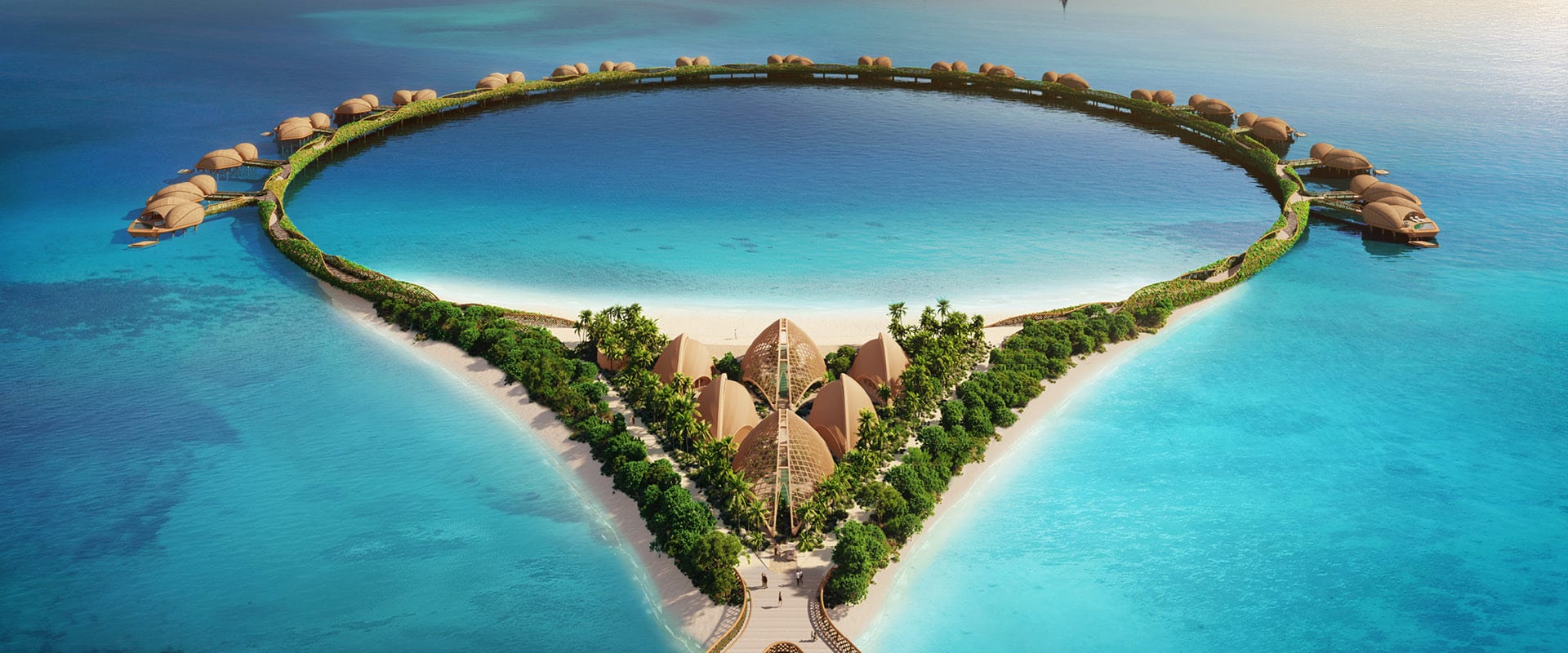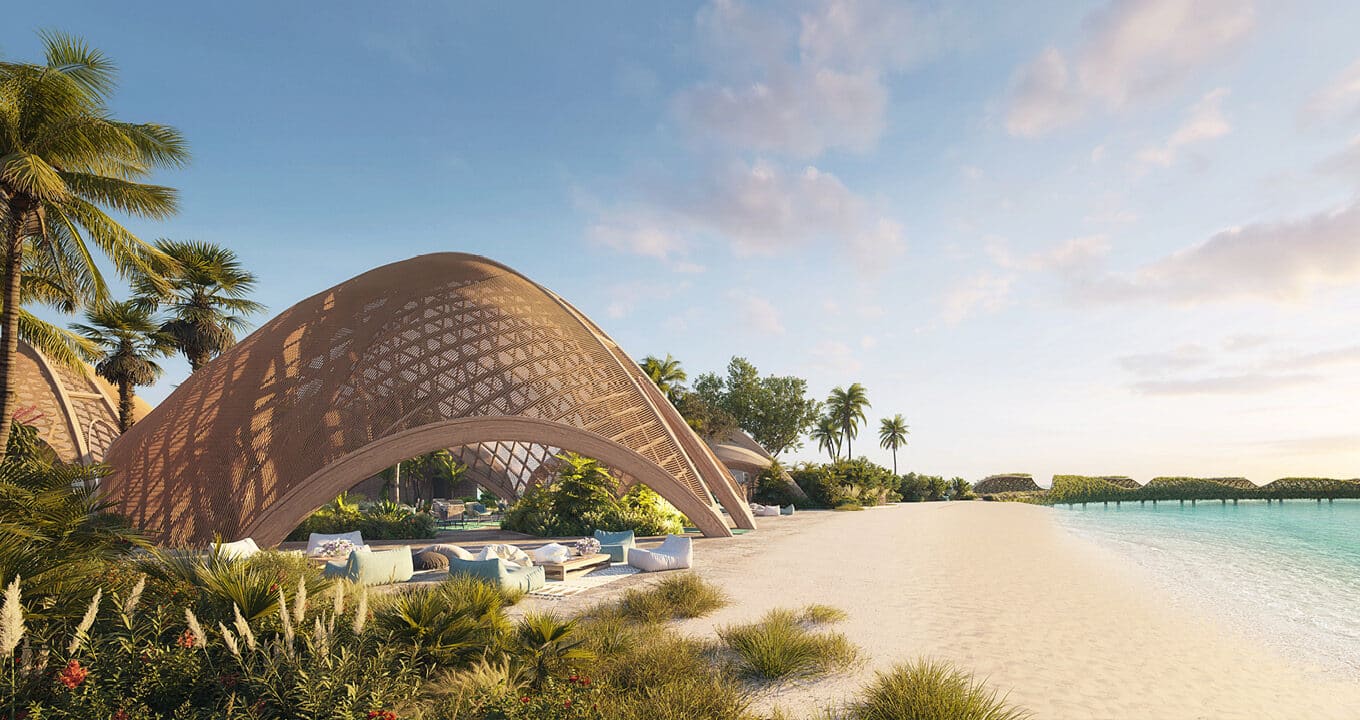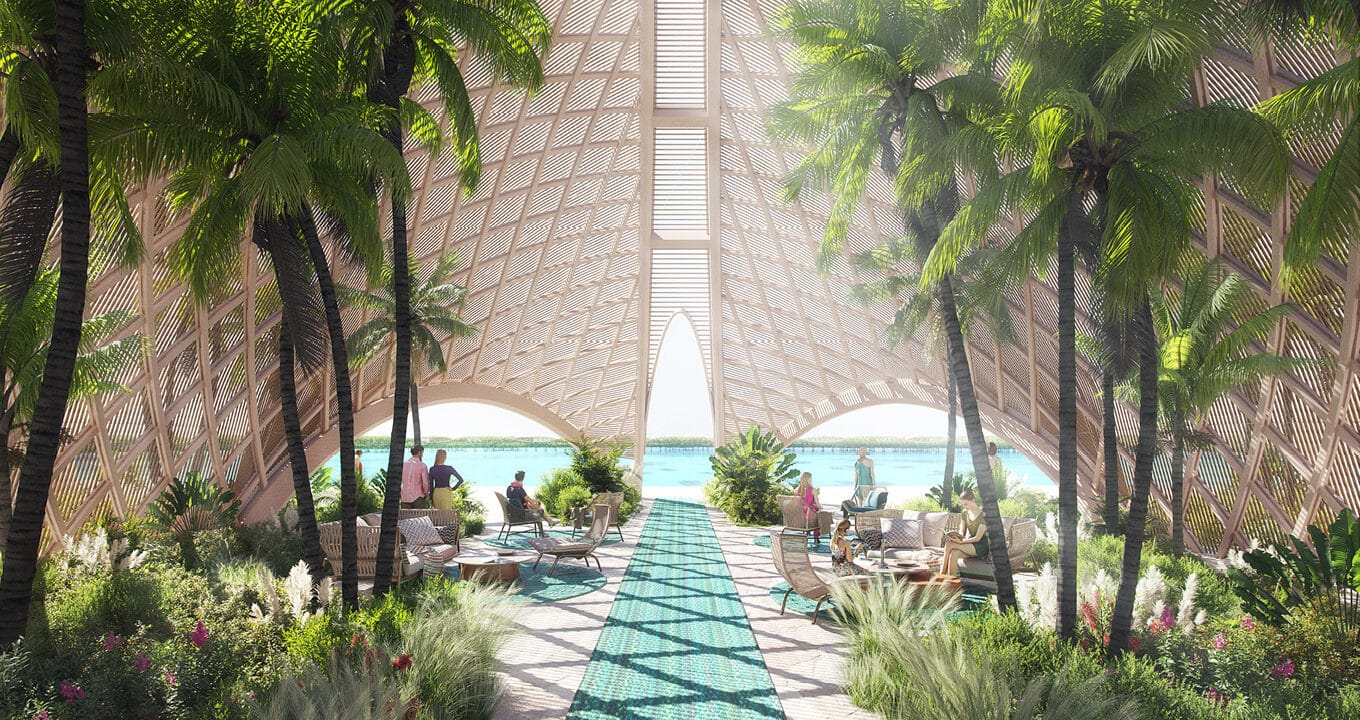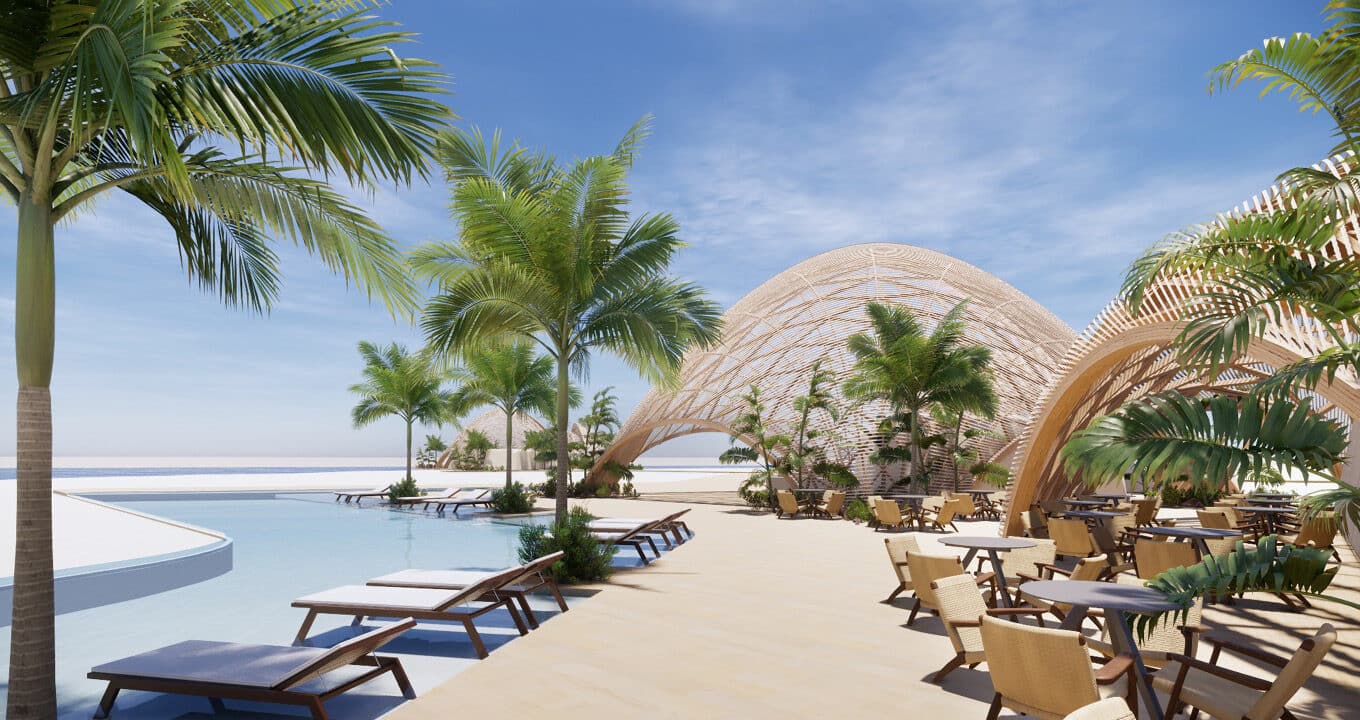Brookfield Properties
ClientThe Red Sea Development Company (TRSDC)
Architect Kengo Kuma & Associates (Islands 9-3)
Foster + Partners (Islands 9-4, 9-5)
Dewan (executive)
Structural EngineerAKT II
Certifications Targeting LEED Platinum
StatusUnder Construction

Hilson Moran worked with both architects to arrive at the optimum massing and layouts to achieve demanding thermal performance targets for the various building typologies, through analysis of solar shading, daylighting, and natural ventilation. All services integrate within these highly unique and spectacular architectural forms, while the site-wide distribution networks similarly integrate seamlessly within the elevated and sunken boardwalks to help leave the surrounding environment undisturbed.
The ventilation and air conditioning strategy deploys a variety of distribution solutions, which work in tandem with passive strategies; All buildings feature openable glazed doors that allow occupants to optionally introduce natural modes.
We’ve worked closely with the TRSDC Smart Technology team to incorporate site-wide smart-control systems, whereby guests use intuitive handheld tablet devices for environmental control of their villa and to engage with hotel services and excursions. Hotel-operators’ smart technologies will be integrated, to further streamline operations.
Most utilities within each resort are served by discretely located centralised plant. The overall energy strategy capitalises extensively on the abundant local solar energy, in conjunction with limited thermal and battery storage to extend this into overnight supply. Electricity is 100% solar (drawn from a nearby solar farm on the mainland), while hot water is created locally within each building using a combination of electric and solar thermal. Fire suppression is supplied from a central pumping station, while a high-tech vacuum-operated sewerage network solves the site’s long distances with a minimum disturbance of the local environment, and again from a singular centralised hub. Where installations are locally buried, these are positioned deep enough to be covered and protected, but not so deep that they encounter the seasonal water table.






